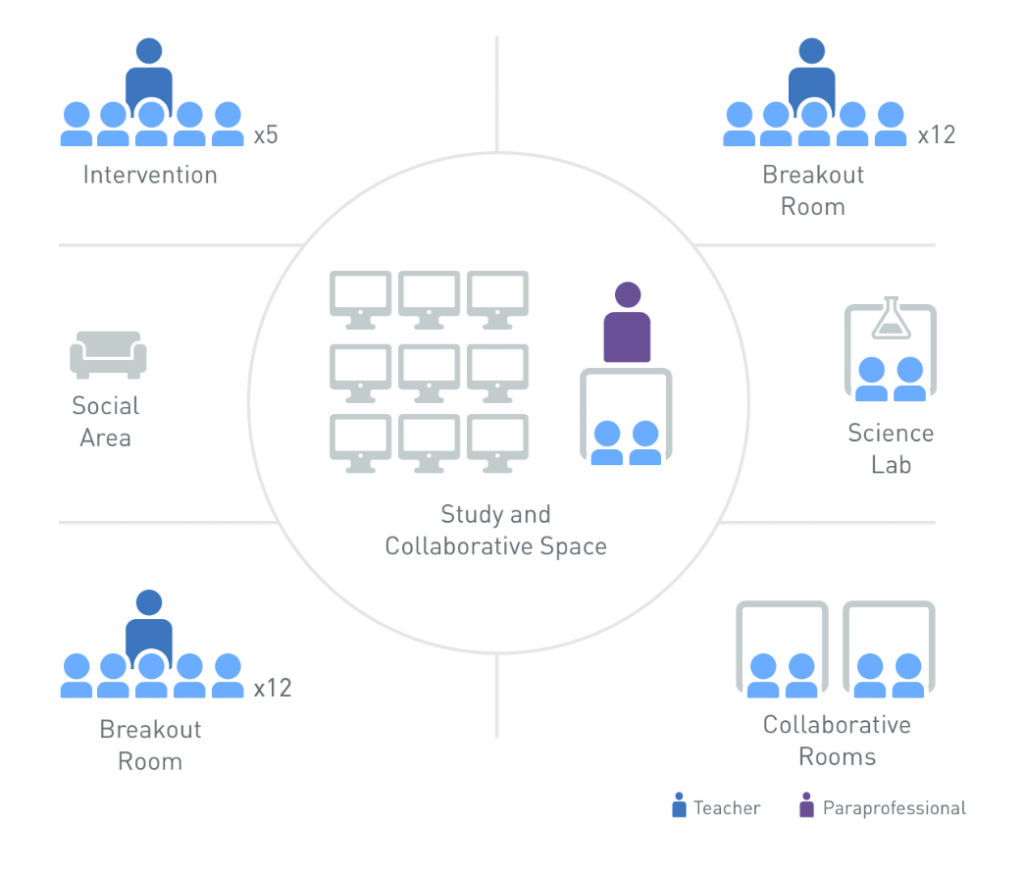A deeper look at the Flex model
February 19, 2016 |
February 19, 2016 |
In our blended-learning research, we have aimed to develop a common language for educators to use as they talk about going blended. Part of this work has involved developing a taxonomy of blended-learning models that describe how we see blended learning taking shape in schools across the world. Although not every school fits neatly into a single model, all blended-learning implementations are generally a combination of one or more of these models.
One of the new features of the BLU school directory is the ability for users to search for schools by blended-learning model type. Since re-launching the BLU just over two weeks ago, the most popular search has been for schools using the Flex model. Because of this, I thought it might be helpful for those seeking a better understanding of the Flex model to break down its definition into three parts and discuss each part separately. We define the Flex model as:
(1) A course or subject in which online learning is the backbone of student learning, even if it directs students to offline activities at times.
Although there is no hard metric for what “backbone” means, the Flex model offers teachers and students increased flexibility because online learning does much of the heavy lifting in terms of delivering instruction. This gives students and teachers more control over how they use their time: teachers have time to work individually with students because they are generally no longer standing in front of a class delivering content, and students can move through the lessons and materials at their own pace.
(2) Students move on an individually customized, fluid schedule among learning modalities.
This flexibility is what separates the Flex model from the Rotation models. In the Flex model, students do not transition between learning modalities at the same time. Instead, students operate independently and receive help from teachers when needed.
(3) The teacher of record is on-site, and students learn mostly on the brick-and-mortar campus, except for any homework assignments.
This distinction separates the Flex model from the A La Carte model, where the teacher of record is online, and the Enriched Virtual model, where students may complete the majority of their coursework remotely. The Flex model is designed to support students and teachers together in a brick-and-mortar location away from home.
(4) The teacher of record or other adults provide face-to-face support on a flexible and adaptive as-needed basis through activities such as small-group instruction, group projects, and individual tutoring. Some implementations have substantial face-to-face support, whereas others have minimal support.
 The Flex model can look different in different schools depending on the structures that have been put in place around it. Some blended-learning programs using the Flex model give students more autonomy than others. For example, some implementations may require students to meet with teachers once a week to go over goals, whereas other implementations may require teachers to intervene much more frequently.
The Flex model can look different in different schools depending on the structures that have been put in place around it. Some blended-learning programs using the Flex model give students more autonomy than others. For example, some implementations may require students to meet with teachers once a week to go over goals, whereas other implementations may require teachers to intervene much more frequently.
Two examples from the BLU of schools that have implemented the Flex model are Innovations Early College High School in Salt Lake City and Vancouver Flex Academy in Vancouver, Wash. At Innovations Early College High School, online learning is used to deliver the bulk of the instruction, but subject-specific teachers also offer small-group instruction that supplements the online content and provides opportunities for project-based learning. The school requires students who aren’t making progress on their own to attend these small-group sessions, while allowing students who are moving at pace or beyond to attend them if they choose. Apart from small-group instruction, subject-specific teachers and tutors are available on a flexible, as-needed basis to provide one-on-one help to students. In addition, students meet weekly with a mentor (generally the teacher with whom they get along best) who helps to guide their academic choices week-to-week in order to help them develop control and responsibility over their learning. Innovations Early College High School has had graduation rates significantly higher than those for the district or state (read more here).
In contrast, Vancouver Flex Academy (VFA) has implemented the Flex model with a higher degree of teacher-led instruction built in than at Innovations Early College High School. Advisors meet with students three times a week, and students generally meet with teachers for small-group instruction several times a week. VFA does not have a requirement for how often students should work with teachers, but, as described in its BLU school profile, nearly half of the students’ time during the school day is spent in a classroom setting with a teacher. VFA also uses the Flex model to encourage student autonomy by giving students choice over what coursework or material they work on during the school day. Depending on each student’s needs, more or less flexibility is given to ensure that all students are progressing and staying on task.
(You can search through over 200 examples of Flex programs in the BLU here.)
For educators thinking about implementing the Flex model, here are four things to keep in mind:
As more schools join the BLU and share their implementation stories, we hope that educators will gain a clearer sense of some of the opportunities and challenges of the Flex model and the structures that need to be in place to help it serve children in the best way possible.
Comments are closed.